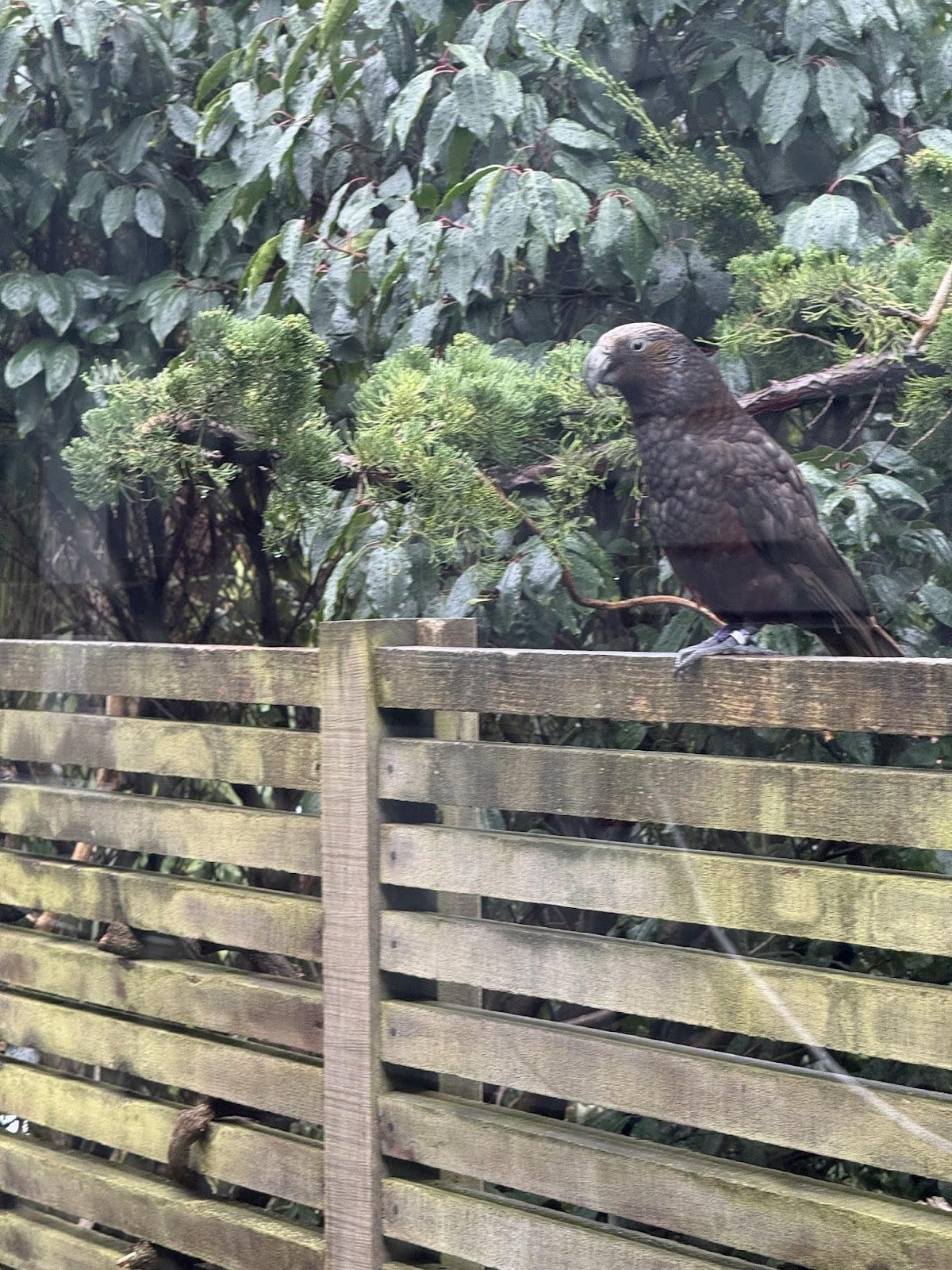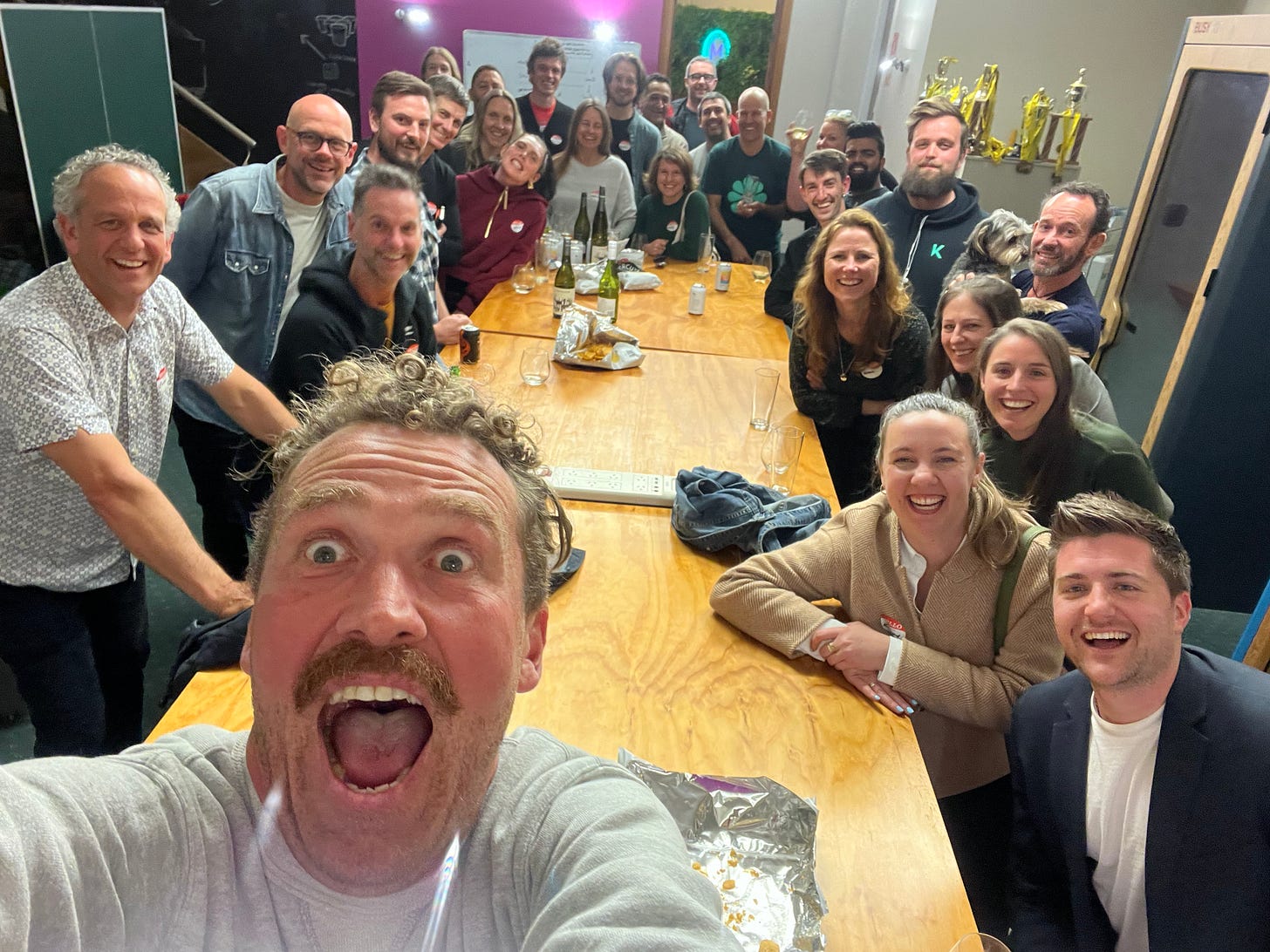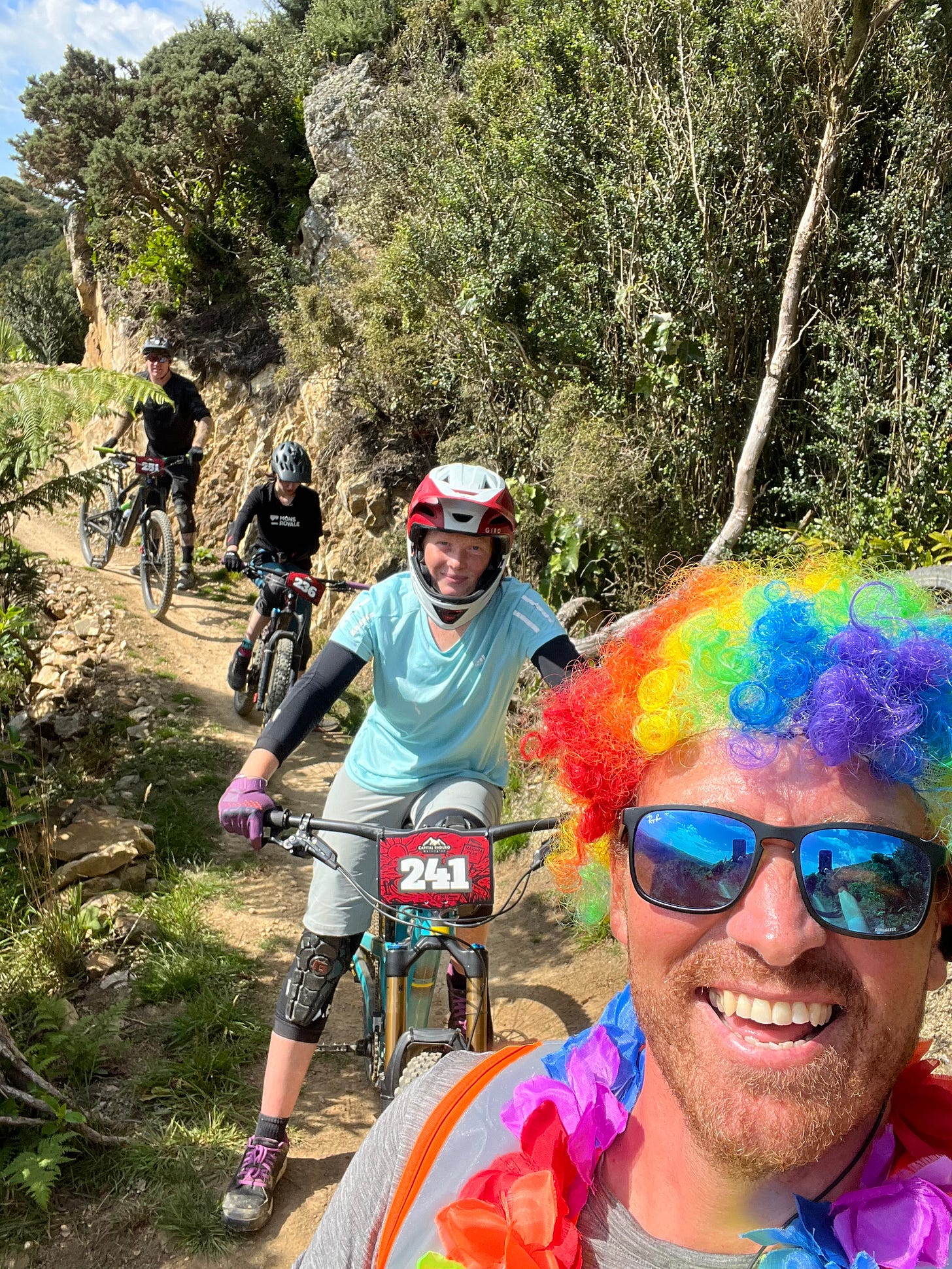I’m deeply grateful for my good fortune. Sure, I took risks and worked hard, but I started from a foundation of privilege. Since then I have spent 20+ years riding the escalator of personal wealth, maximising every advantage I had along the way.
So, it’s only right that I give back. In the words of Michael Lewis, “Above all, recognise that if you have had success, you have also had luck—and with luck comes obligation. You owe a debt, and not just to your gods. You owe a debt to the unlucky.”
But paying that “debt to the unlucky” is more complicated than it seems:
Many of the most urgent and worthy causes—education, climate change, poverty, cancer—are vast and complex. You could donate billions to a single cause and only scratch the surface. Real change often requires systematic shifts, which usually means political intervention. And politics is often complicated and controversial.
The impact of donations can be difficult to measure.
A lot of charities don’t have a sustainable business model. Once you start funding an organisation or project, when do you stop?
And true, from-the-heart giving is real work if you take it seriously. To be truly effective you often have to prioritise “relationships over resources1,” and do the hard work of getting to know the people you are trying to help. Giving requires humility in that way.
Don’t let these complications put you off though. Here is what I did:
Step 1. List the Resources You Have
First, list your resources. Money, sure, but as Ryan Holiday reminds us, “Money is not the only currency of generosity. You can give your time, your energy, your words of encouragement, your patience, your kindness.” You have political, social, and cultural capital. You have experiences, skills, mana, connections, and even your home. You get the idea—make a list.
Step 2. Decide on the Causes You Care About
The next step is to do the hard work of deciding what causes truly matter to you and how you can apply your resources to make a difference.
Having your values and interests clearly defined will be invaluable in helping narrow down the causes that matter to you. But for me, that wasn’t enough. It wasn’t until the wonderful Kate Frykberg posed four simple but thought-provoking questions that I gained some clarity: She asked “If you could wave a magic wand, what would you change about your neighbourhood? The city you live in? The country you call home? The world?”
Here’s what I came up with:
I would foster a stronger sense of belonging and community in Island Bay.
I would make Wellington a more vibrant and liveable city.
I would restore New Zealand’s biodiversity by protecting our native forests and controlling pests to bring back birdlife. I would also create a fairer society, supporting those who face systemic disadvantages.
I would help slow climate change.
Step 3. Donate Money
Based on your resources (Step 1) and what you care about (Step 2), the next step is to take action. This might mean donating money.
It doesn’t always mean donating, however. Again, the currency of generosity is not always money. For instance, fostering a sense of belonging in Island Bay doesn’t need money, it involves opening my home to neighbours and helping out at the school’s market day and tennis club working bee. Likewise, making Wellington more vibrant and liveable might mean investing time in local projects like tree planting or trail building.
Having said that, in New Zealand our wealthiest 1% have a net worth 68 times higher than the average Kiwi. Just 38,000 of us are in this exclusive group, and together we own a quarter of the country. If you’re wealthy, I see it as a moral responsibility to help address this inequality by giving some of your money away.
I chose to do this through the Gift Trust, a “donor-advised fund” that helps identify charities and projects aligned to the causes donors care about. I shared my answers to the four Magic Wand questions to guide their research, and they came back with a long-list. I whittled that down to a short-list and then they take care of managing and distributing the donations.
The great thing about a donor-advised fund is that once you contribute, the money isn’t yours anymore. It’s in their account and you’ve already received the tax deduction, so there’s no turning back. This separation is liberating—it means I can give the money away with impunity. I can treat it like it’s not mine; because it’s not.
Before you donate money, you might want to consider:
a. How Will You Decide Which Specific Charities or Projects to Donate to?
It’s one thing to decide on high-level causes in Step 2, but once you start getting lists of specific charities and projects it can get a bit overwhelming. There are so many worthy causes! I found it helpful to have a list of criteria to help me winnow the options from long-list to short-list:
Do they need my help? For example, are they already well funded from richer sources?
Will this be a multi-year investment and relationship?
Do they have the potential for multi-generational impact?
Can we get involved first-hand? For example, are the causes/projects nearby? Are the kids interested in helping?
b. Should You Be Investing Instead of Donating?
Sometimes, it makes more sense to invest rather than donate. Investing in companies working on important social or environmental issues can often have a greater impact than simply giving money away.
For instance, I don’t believe that donating to nonprofits is the most effective way to combat climate change. The real progress will come from technological innovation, so I prefer to invest in climate-tech businesses that are more likely to have a significant impact on reducing emissions.
I also invested in an online supermarket because I felt like it was the right thing for the country to break our current duopoly. I wasn’t doing it for outsized returns, I felt that having more competition would be better for all New Zealanders. (Unfortunately, it didn’t survive. R.I.P. Supie).
c. Should You Concentrate Your Giving?
Right now, I’m experimenting with different approaches, which has led me to donate to nine different causes. However, there's something to be said for focusing on just one or two charities, rather than spreading your contributions thin and diluting their impact. Plus, many small donations mean that you get on many mailing lists, a pet peeve of mine. Receiving physical mail from organisations like The Salvation Army, UNICEF, or the Red Cross is a complete waste, those letters go straight into the recycling bin.
d. Are You Doing a Mix of ‘Big Giving’ and ‘Little Giving’?
I think there are two types of giving, and you’re best to do a mix of both:
Big Giving involves donating to large, traditional, well-organised charities that make significant impacts on broader society. These contributions are important, even if they don't always provide much personal satisfaction because they are a bit more arm’s length. This is what I do through the Gift Trust.
Little Giving is about making smaller, more personal contributions that might have limited impact to society as a whole but feel more rewarding. There’s value and a deep sense of fulfilment in giving outside the traditional, tax-deductible avenues—like directly helping family or neighbours.

e. Do You Want People to Know You’re Donating?
The Kiwi thing is to donate quietly—that’s my first instinct, too—and it’s easy to donate anonymously via the Gift Trust. But by putting my name on some donations, I’m hoping I might encourage others to give and maybe to talk about it—to normalise it. Over the last two decades, we've steadily, sadly, been giving less money away in New Zealand, maybe because we're not talking about it enough.
So, deep breath, here’s the list of causes and projects I’ve given to2.
Step 4. Volunteer Your Time
"The best way to find yourself is to lose yourself in the service of others." - The Art of Happiness by Dalai Lama
Of course, giving back is not just about donating money. Based on Step 2, you should also have some ideas on how to volunteer your time.
As for me, I volunteer in three main ways:
School. Many schools, especially primary schools, rely on parents to help them run. I’ve enjoyed doing my bit over the years, whether being a cross-country marshal, athletics day helper, teaching a 7-week bread baking course, coaching touch rugby or supervising road patrol. I also spent three years organising the school's silent auction.
Hands-on, grassroots organisations that I’m passionate about. This type of volunteering doesn’t require any special skills, just humility and elbow grease. Most of the time this aligns with an existing interest or something that’s happening locally. Pulling tree stumps out of the ground to help build a new mountain bike trail, baking for the tennis club open day, planting trees at the zoo’s new enclosure—that kind of thing.
Mentoring and coaching. Ideally, you’d spend most of your volunteer hours doing something you’re skilled at. That’s why most of my volunteering is advising founders and coaching mid-career professionals, because my time is highly leveraged—in a short amount of time I can share relevant experience, knowledge and insights that can make a big difference to the people I’m helping.

The Wellington Startup Collective, a “no advice” format for entrepreneurs that I co-founded with a few others as a way to give back
Finally, I avoid volunteering for committees. There’s often a lot of talking without much action, and I often don’t bring unique skills to the table. I have huge respect for roles like the Tennis Club Captain or School Board members—society needs those people—but I find committee work boring and often filled with virtue signalling or talking just to agree with the previous speaker. (There are exceptions: when a small, committed group is trying to launch something new, that’s my sweet spot, and I’ve been involved in several of those.)
You might want to consider this too—what areas of volunteering do you want to avoid?
Step 5. Go Back to Step 2
This five-step process is all very neat and orderly, but it’s nothing like how I really went about my giving journey. I muddled through, tackling bits and pieces from each step, and this overarching approach only emerged once I sat down to write it as advice.
In fact, I didn’t fully understand which causes mattered to me or what I wanted to support until I got into the ring and started giving. It’s a bit like house hunting—you start with a checklist of what you think you want, but it’s only after visiting a few open homes that you figure out what really matters. Likewise, I had to do some giving and reflecting on the experience in order to refine my focus.
I’m continuing to experiment. For example, I’m debating whether to stick with the Gift Trust or just focus on supporting one or two causes directly. Plus, as the kids grow older and their schools require less parent involvement, I have more time to explore other volunteering opportunities.
My point is, once you reach the end of Step 4, you're not finished—you start again at Step 2, continually exploring how to best use your resources to repay your “debt to the unlucky” in a way that’s uniquely yours.
For now, here’s where I am at with my giving:
Try and Get the Kids Involved
I tried to get my kids involved in deciding which causes to support, even going as far as creating a presentation to spark their interest. “Thank you for joining me today. Please, take a seat. Help yourself to water and mints.”. They weren’t very excited. (Though, surprisingly, when I once asked my 11-year-old if he was proud of me, he said yes—because of the money I give.) So, set your expectations low. (Or maybe get better kids.)
A couple of tips:
Find ways for your kids to be directly involved with the giving and see the impact they’re making, especially in helping those with less. This can spark meaningful conversations about empathy and giving back. Buying sushi for a man sleeping rough is more visceral and impactful than giving money to UNICEF for kids in the Ukraine. (And as a bonus, research shows that witnessing your generosity's impact first-hand also brings a happiness boost, and feeling good is crucial for sustainable, habitual giving.)
Be mindful of their interests—I tried building mountain bike trails with my son, and he spent most of the time complaining. Turns out, shocking development, manual labour isn’t his thing.
A third of my kids’ pocket money goes into a “share” jar that they use to donate to causes that they care about, although I still have to nudge them to actually distribute the money (even when I match whatever they contribute). I’m trying to build a giving habit.
Act Now, Don’t Wait
One final encouragement. After selling my first business, I parked some money to give away and then did nothing for seven years. I didn’t know where to start. Don’t do that. The only donations that matter are the ones you actually make.
“I expect to pass through this world but once. Any good therefore that I can do, or any kindness that I can show to any fellow creature, let me do it now. Let me not defer or neglect it, for I shall not pass this way again.” — Stephen Grellet
I first heard this phrase from Kate Frykberg





